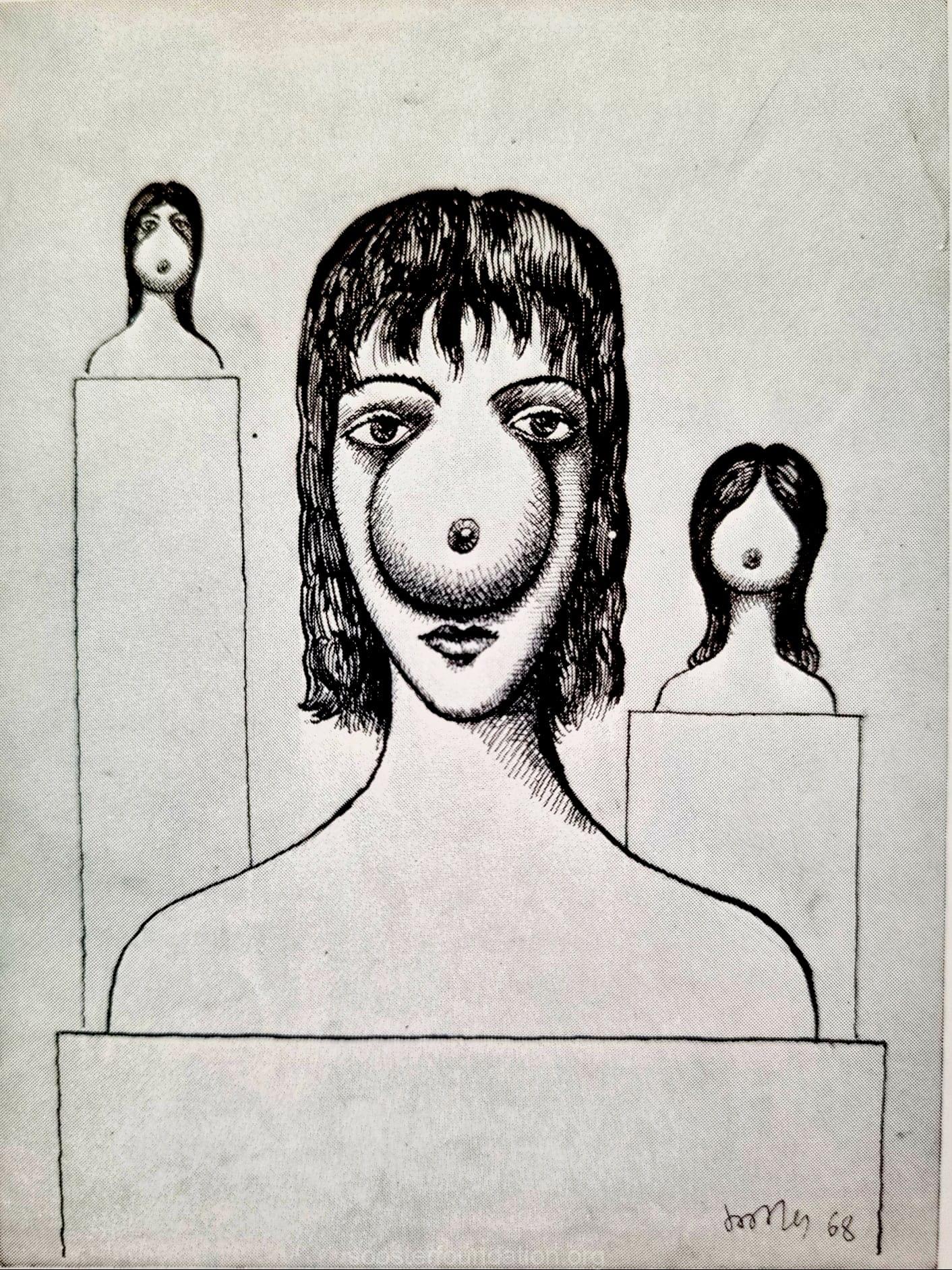Moscow

In 1970, in Cologne, at the "Gmurzynska" gallery, an exhibition titled "Russian Avant-Garde in Moscow Today" took place. Among the exhibited works were pieces by Ülo Sooster.
"One of the most important representatives of contemporary avant-garde art in Moscow, whose imagination is akin to late European surrealism," - this is how it was written in a small exhibition catalog, where two works by Ülo were published.
"Three Busts," 1968, and "Woman," 1962.
In total, there were 19 works by Sooster presented at the exhibition in Cologne.



Ülo's works are exhibited in Barcelona, Lugano, and Zurich.
1970
Ülo illustrates his favorite childhood book. It is 'Spring' by Oskar Luts, subtitled 'Pictures from School Life.'
'He worked on it for a very long time and meticulously. When he first showed me the originals, I didn’t quite understand the idea. Yulo was very angry at that time but then started explaining everything. He was a forerunner of a new perspective and exaggerated it significantly—it was somewhat like the 'fish-eye' effect in photography. At that time, no one in the Soviet Union was drawing like that; it was an extremely fresh and unusual approach for illustrating fantasy, etc. Back then, it seemed strange, unusual, and even frightening to me: I thought that Yulo must have gone mad. But now, after 30 years, this method has entered both the visual arts and television.' (From the memories of Lydia Sooster).



Relief paintings "White Junipers," "White Egg," "Egg Divided into 4 Parts" are completed, and an author’s copy of the painting "Unequal Marriage" has been started.


From the memories of the artist Anatoly Brusilovsky: “... one time he came to my studio. I had a habit – everyone who visited would write or draw something in my Guest Book – whatever they wanted. Over the years, it became a huge volume – there were all sorts of things in there! Someone wrote: ‘This is the Museum of Friends!’ And indeed – a museum, a document of the era. I asked Ülo to draw something... He pondered, chewed his lips, muttered: ‘it’s, you know, such a…’ and began to draw. I politely didn’t peek.
After he finished drawing, he slammed the book shut and left rather quickly. When I opened the page, there was a drawing of an egg. But… It was exploding into pieces, tearing apart – and inside lay a dead chick!
A couple of weeks later, Ülo was found dead in his studio. Heart failure.”

From a letter by director Andrei Tarkovsky dated November 4, 1970.
"For God's sake, forgive me for not writing for so long. I have something that is, in a way, the reason for my silence. I had a good friend and an excellent artist. Sooster. An Estonian. He was found dead in his studio a week ago. Stroke. 46 years old. A person about whom no one in the world could say anything except that he was a strongman. Indeed, under Stalin, he was repressed. And he was never accepted into the Union of Artists. And so he was not accepted.
We had snow, and winter suddenly came. It’s cold. So nothing cheerful has happened during this time. And one should think about death too. We will all die and will die in different ways. As God wills."
Ülo Sooster died in his studio on Sretenka Boulevard on October 25, 1970.
